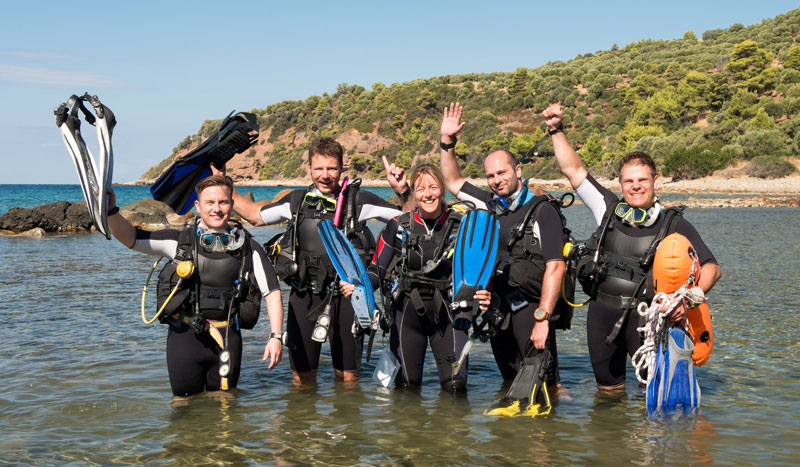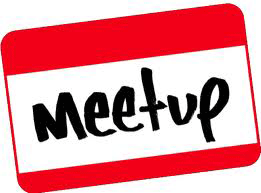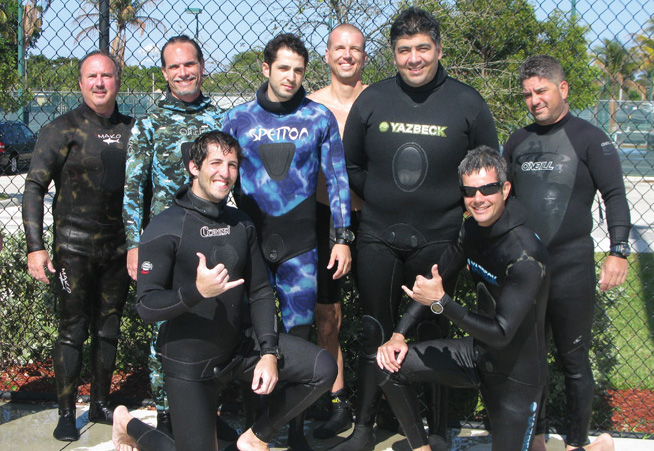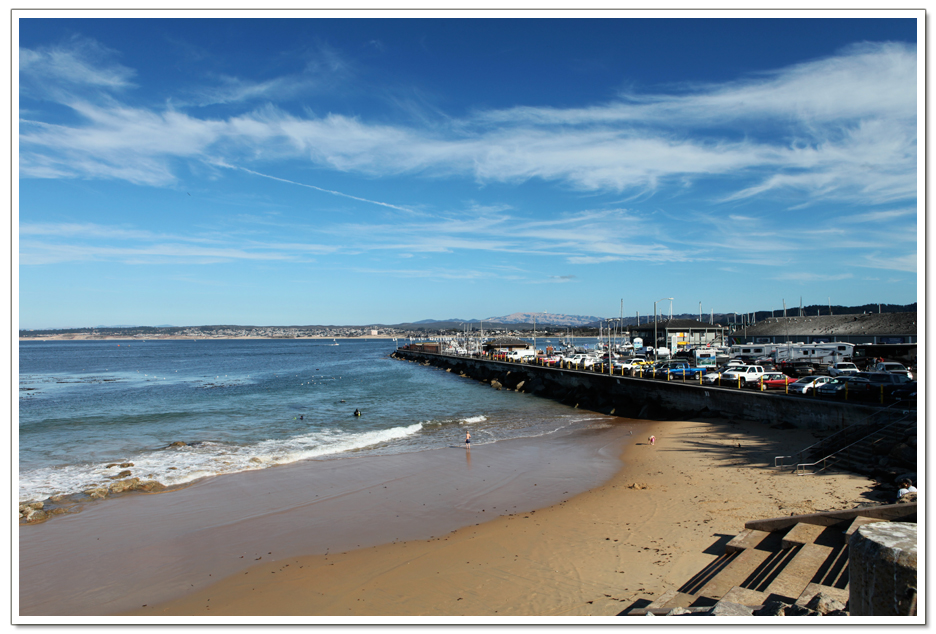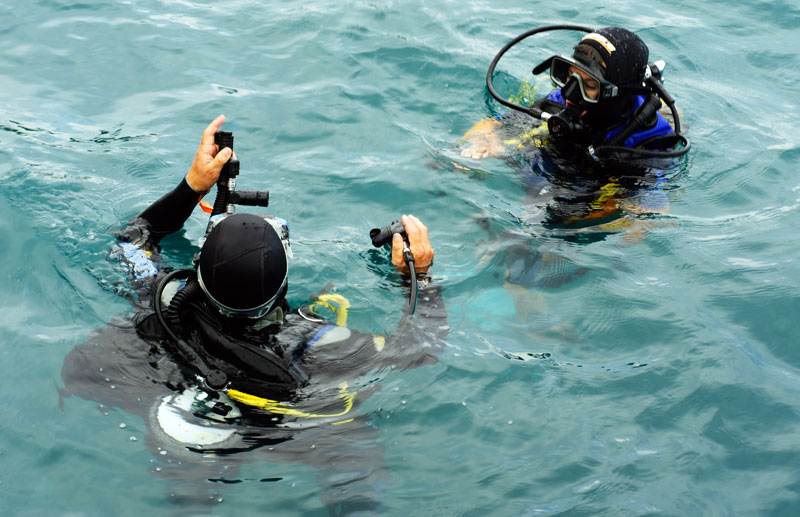The Internet has sparked a lot of change the SCUBA industry. The educational sessions required for certification can now be accomplished online, pool sessions can be completed locally, and certification dives scheduled in mild tropical locations – all organized via websites, hosted by international SCUBA organizations, and in coordination with local dive instructors.
In the past, a newly certified diver would find a SCUBA club to hook up with where they could enjoy dive activities, acquire further experience and training, and have a new aquatic companionship. Dive clubs, including my own, Alacosta Divers, are having problems attracting new divers and younger members due to the Internet. Who needs to travel after a long day of work, to sit through a lengthy meeting operated under Robert’s Rules, to watch a speaker’s presentation of underwater life, when you can stream something similar instantly onto your tablet or iPad?
Unfortunately, you can surf, lurk and stream until the Orcas breach, but that doesn’t get you in the water with them. So, how do we find local dive opportunities and dive buddies in the days of texting, YouTube and Twitter?
The killer app for divers during the last few years has been Meetup.com, which emerged from a backdrop of email list surveys, forums, and Yahoo! groups that were great at creating common interest communities but were not very successful at making these groups locally accessible. Founded in 2004, the company targeted preexisting online communities and encouraged participants to hold face-to-face Meetups in their local area. Actually, the founders initially invited online enthusiasts to fictitious events such as International Pug Lovers Meetup Day. Pug lovers hastened to join Meetup.com to attend their local, stone soaped event that they themselves created. Meetup.com had tapped the humanizing power of the World Wide Web that had conjured meta communities out of thin air, however wired or not, and brought these communities down home.
Story and Words by Stan Sciortino
Today there are 260 SCUBA Meetup groups with 57,000 members worldwide in 21 countries. SCUBA divers exceed Pug Lovers by 15,000 members. With so many SCUBA Meetups, I’ll keep to the spirit of locale and focus on groups nearby. I live in the San Francisco Bay Area and dive around Monterey Bay and will be writing about Meetups in this area.
“Meetup’s mission is to revitalize local community and help people around the world self-organize.” — Meetup.com
A Meetup group is a loose organization of members who share a common interest and who want to meet each other locally. There are three active SCUBA Meetup groups in the San Francisco Bay Area that I belong to: The Bay Area Scuba Lovers Meetup (Santa Clara, 700+ members), Northern California Underwater Photographic Society (Santa Clara, 190+ members), and The SF Scuba Diving Group (San Francisco, 710+ members). Aqua Tutus Dive Club also has a Meetup, but you need to join Aqua Tutus to access and schedule events, which makes it an extension of their SCUBA club.
A SoCal Club, Dive Animals, which operates its own hard bottom inflatable, schedules their boat dives via a Meetup group. You have to be a Dive Animal club member to use that Meetup. One of the largest SCUBA Meetup groups, Power Scuba, with 2,300 members, is hosted in La Jolla, California and is open to all divers. An interesting and active group, and they do warmer water diving, lucky them. NCUPS is also a SCUBA club but runs the open Meetup listed above; you don’t need to be a member of NCUPS to join and host events. The current president of NCUPS, John Fifer, also hosts an independent Meetup called The Greater Bay Area Scuba Lovers Meetup listed above. Many people belong to all three and most, like me, cross post events to obtain maximum attendance.
There is a newer Meetup called the NORCAL SCUBA CLUB. Dive instructors from AAA SCUBA in Alameda, California originally started this Meetup. They dove Monterey occasionally, but had only acquired about 130 members before the group sent out a notice that they were going to fold. This group has since acquired new sponsors but has not hosted any activities since March of 2014.
Meetups do go out of business. The Meetup sponsors pay a fee starting at $12 per month to host a Meetup and sponsors have final say over how their Meetups are organized. The sponsors can end a Meetup group if they no longer want to pay the $12 monthly fee. Some sponsors do move on to other things and bequeath their Meetups to someone new. This is how John Fifer inherited the Bay Area Scuba Lovers Meetup from a former sponsor.
How to create a Meetup Event
A Meetup starts out as a Suggested Meetup that any group member can create. These suggestions usually appear in a separate tab found on the home page of the Meetup group. Members can view the Suggested Meetup, comment on it to request changes in date, time or location. The back and forth can go on for a week or longer.
The Suggested Meetup will wait passively until enough interest is generated to promote it to an announced Meetup. Or it will disappear silently if the proposed date has passed and less than three members have RSVP’d for the Meetup.
Meetups
When three or more members RSVP their interest in actually diving a date, the suggestion becomes an official Meetup and is announced via email to all members of the group at large. Further comments added to the particular Meetup are sent to group members who RSVP. Some Groups automatically promote a Suggested Meetup to an announced Meetup when three people have RSVP’d and some await the timely intervention of the Group moderator. The rules are specific to each group and determined by the sponsor. Meetup groups are not democracies.
Hosts
If you suggest a Meetup, you are the host. As host, you can change the date, time and title of the Meetup, up to the last minute. No one else can change the Meetup—except for the moderators and sponsors, of course. With such powers come responsibility, a host is expected to set the ultimate meeting place and time and coordinate the final event. The host promotes an event and negotiates with members interested in the event. An event can start with one dive location and end up with a very different venue rather quickly. When you hit the right note to peak interest, you can get eight or ten divers to RSVP and attend.
It’s about change
Expect the suggested dive to change. Beginner or advanced, shore or boat, local or international, the theme of the dive usually does not change. If you see a suggestion for a beginner’s shore dive in Monterey, this may cycle through several dive sites, but none of them will be treacherous. You can always comment and inquire about the technical level of a particular site right there on the Meetup or Suggested Meetup page.
Be sure to review the event before setting off for the final dive location. I initiated a Meetup at the Breakwater (Del Monte Beach) in Monterey to be followed by a dive at Wharf 2. While Breakwater is a beginner’s beach where you can spot schools of SCUBA neophytes in the midst of a certification dive or dive groups suiting up on the lawn, Wharf 2 can be a challenge due to fishermen casting their hook and line down upon divers and surge that can scrape a diver against the encrusted pillars. I would not claim Wharf 2 was a beginner’s dive. By the end of the text stream for this Meetup, Breakwater had yielded to Monastery Beach, which can be as treacherous as it is rewarding but is certainly not a beginner’s dive.
By reading personal profiles, you can usually tell the skill level of a member. Be honest about your own skill level and let folks know what your expectations are.
Leading the Dive
Hosts are expected to lead the dive unless they state otherwise. After choosing buddy pairs, divers generally move out as a group and stick together, remarkably. If you lead the group, be able to keep compass bearings and check everyone’s air occasionally until you get a feel of how everyone is diving. You never want to encourage an out of air situation in yourself or others. I write this as a precaution, in the water everyone’s on their own.
The Meetup group, the host and other divers who attend a Meetup do not take responsibility for you. SCUBA Meetups cease to be social events once divers are in the water. If you need further training to dive safely, hire someone to train you, then attend a Meetup. Meetups are not training events. If you aren’t comfortable with conditions at a dive site, don’t dive. If someone is finning somewhere you don’t feel comfortable going, let them know you are not going any further and turn around. If you’re getting low on air, let your buddy know, then turn around. The ocean does not negotiate and is not polite.
Cameras
Since I dive with a camera, I tell folks I will lead the first dive of the event, with what all that entails, but need to concentrate on photography for a second dive. For subsequent dives, I make it clear that participants can follow me as I fin slowly along and I will help divers out and do air checks, but will not chase divers down. I’ve had new divers follow along for that second dive quite successfully, but they needed to follow me closely or I tell them to definitively dive with another member of the group. What works best is that folks with cameras should dive with other people with cameras.
Attending the Dive Meetup
Let the host know you are definitely coming and inform the host if you are running late. If you want to cancel the day of, let the host know so the group is not waiting for you. Folks tend to be polite and will wait for you. Conditions in Monterey can change rapidly. Check the Meetup page in case there are any last minute changes. It is also advisable to share a phone number for texting.
A chosen location may not have suitable conditions the morning of, and another location could be chosen on the spot after a discussion on the side of the road by the early arrivers. Divers present may move on and communicate the change via smart phone and by texting you at the phone number you provide. Be prepared and have all your equipment ready to dive.
Showing up late and fooling with your equipment for an hour prior to hitting the water is not encouraged. Divers will help you zip up and don equipment, but will not usually carry tanks and weights for you. Divers, all hot and bothered, and dressed to kill in their tight exposure suits will not wait to keel over in the baking sun while you take forever to prepare. If you are very late or your equipment is out of control, politely bow out for the first dive and join in for the second when you are better prepared. If you do take a long time to prepare, arrive early.
Why Meetups?
Meetups promote diving. I had sponsored an Alacosta Dive Club dive at the beautiful Point Lobos State Park that almost sank because several members canceled, leaving behind paid reservations. Is the tank half empty or half full? I turned this Dive Club flop into a Meetup and offered the reservations on a first come basis to Meetup members. This dive quickly attracted eight divers with additional Meetup members requesting extra slots.
Safety First
This was a great beginner’s dive at Pt. Lobos that attracted both new and seasoned divers. During the course of the first dive our group meandered along the rocky walls beyond Canary Point in Whaler’s cove. There was a good amount of surge and a lot of muck suspended in the water. Some divers were following me, but the visibility was 10 to 15 feet at best. I was focused on macro life of nudibranches, sponges and anemones: I was not moving fast. Fortunately, we did stick together throughout the dive but we were spread out and I could only see a couple of divers nearby at any given time.
I noticed that the group was migrating en masse up into the rocks along a wall and going shallow; I realized someone had found the one shallow gap in the wall that lead to adjacent Bluefish Cove and was going in! I love Bluefish Cove. On a calm day with experienced divers and a solid dive plan, shooting this gap into Bluefish Cove might be a fine option, though not without risk—you might fail to find the narrow route back into Whaler’s Cove and there is no way to climb out of the water by way of the cliff face surrounding Bluefish. Frankly, Bluefish is best accessed by boat. Launching this group of divers including newbies already low on air through this turbulent gap into Bluefish would certainly mean a one-way trip. I anticipated a brutal mile-long surface swim against shifting currents to circumnavigate the treacherous rocks separating the two coves in order to return to our exit point.
A beginner’s dive turned advanced and suicidal. Alarmed, I swam into the gap, tugged on a few fins along the way, gesturing the divers to follow me and managed to turn the group towards a more mundane conclusion. A check indicated that several divers were low on air. We turned and ended this beginner’s dive as advertised and without casualty. Since that time I’ve done many dives with Meetups and have met a number of experienced dive buddies as well as new divers motivated to learn the sport. But, I always remember to put safety first. Diving with people you don’t know can be a great experience, but SCUBA can be a hazardous sport and we all need to follow prudent safety practices.
Let’s Dive I find the Meetups augment my dive club experience and are a great way to get into the water when other club members are busy. I still think clubs have a place. If you join a dive club you do get to know the same divers over time. You can also build relationships that extent beyond diving. Diving with a different cast of characters every month is like diving with different dive equipment every time. There’s a sharp learning curve that you may not be able to climb fast enough. Whether by dive club or Meetup or both, you can still identify a few people to buddy up with consistently. Whatever it takes to get you in the water, go for it!
Story and Words by Stan Sciortino
Stan Sciortino is the President of the Alacosta Dive Club. You can reach him at prezz@alacosta.org or divelink@sonic.net. (510) 229-0902

